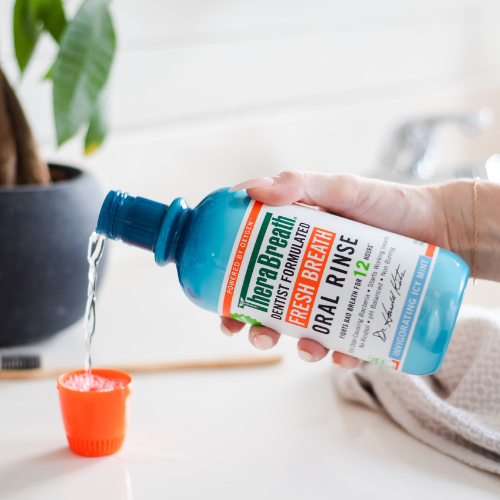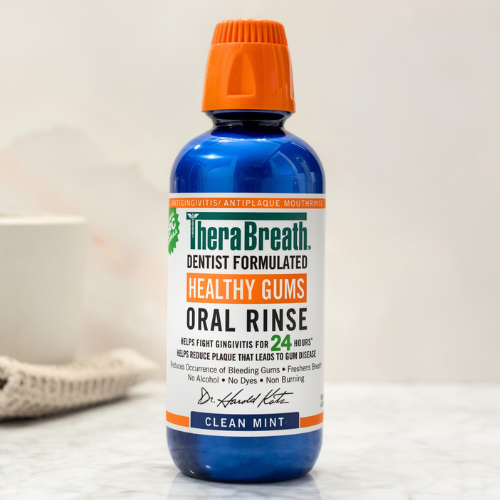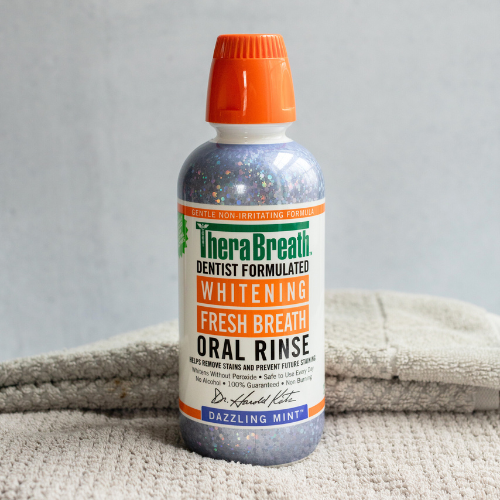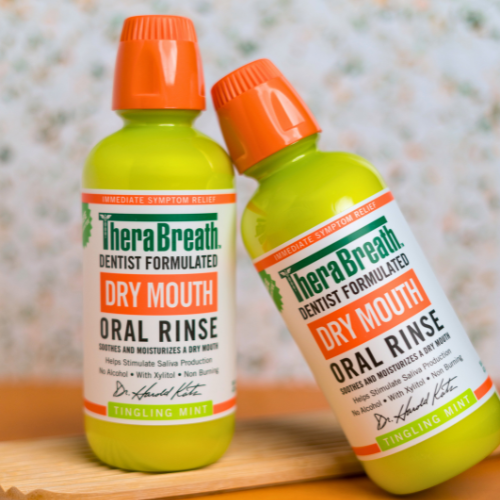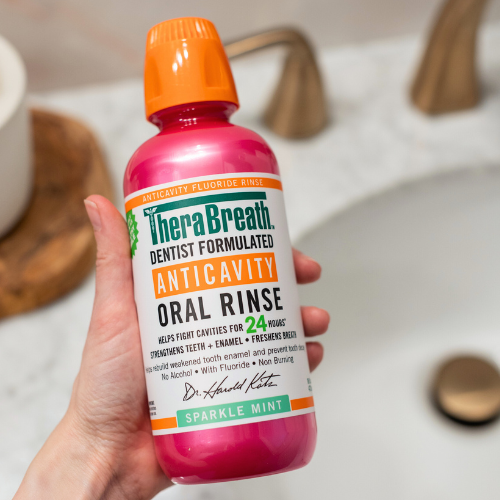Bad Breath in Kids
Share

The primary two reasons kids and toddlers develop halitosis (bad breath) is they fail to brush their teeth and breathe through their mouths instead of their noses. Many young children don’t thoroughly brush their teeth themselves. Toddlers tend to dislike having their teeth brushed, which makes it difficult for mothers to remove food debris between teeth and at the gum lines. Leftover particles stimulate bacterial growth, bad breath, cavities, and tartar buildup on baby teeth. Although toddler teeth are temporary, regular dental checkups are extremely important to the future health of a child's permanent teeth and gums. If baby teeth are lost prematurely, the unoccupied space may cause emerging teeth to shift and grow in at abnormal angles.
Breathing through the mouth can lead to dry mouth, one of the leading causes of bad breath. Although having malodorous breath in the morning is common for kids and adults, it may indicate a medical condition if it persists during the day, especially after thoroughly brushing and rinsing in the morning. Younger kids are not capable of conveying the presence of health issues unless something is causing them pain. As a result, minor allergies, sinus infections, head colds, or inflamed tonsils can go unnoticed by parents if the child does not experience fever or persistent vomiting. Toddlers who go to daycare are especially prone to bad breath because of day-to-day contact with other small children who carry respiratory viruses associated with congestion, sore throats, and postnasal drip.
Oral Anaerobic Bacteria
Breathing through the mouth, even at irregular intervals, promotes anaerobic bacterial growth, lack of saliva flow and oxygen, and excessive mucus build-up in the throat. All of these elements are conducive to the proliferation of bacteria on the tongue, between teeth, at the gum line, and in the back of the throat. The waste excreted by these bacteria are foul-smelling compounds called volatile sulfurous compounds (VSCs). VSCs smell like rotten eggs or even decaying meat. Amino acids called cysteine and methionine are converted into hydrogen sulfide and methyl mercaptan, two extremely odorous substances that can cause bad breath in both kids and adults.
The tongue harbors many bacteria, and unless rinsed or brushed off, these bacteria continue to accumulate. They are responsible for the characteristic white, pasty film often seen on "morning" tongue or tongues that have not been cleaned.
Conditions Contributing to Bacterial Growth in the Mouth
- Decreased output of saliva
- Saliva stagnation caused by mouth-breathing, medications, or underlying illness
- A diet high in protein (anaerobic bacteria feed on sugars and proteins)
- An increase in the pH level in the mouth
- More necrotic mouth cells than usual
- High blood glucose (onset of childhood diabetes)
- Dental problems (e.g., gum disease, abscessed teeth)
- Fungal infections (e.g., thrush)
- Postnasal drip caused by a runny nose (bacteria flourish in mucus)
In toddlers, a small foreign object may get lodged inside one of the nasal passages, obstructing the ability to breathe properly, which can lead to bad breath. When this happens, the child will simply choose to breathe through the mouth since he or she is not old enough to understand or verbalize what occurred. Mothers who notice a healthy toddler breathing through the mouth may want to check the nasal passages for an obstruction.
Tonsillitis in Kids
Repeated bouts of tonsillitis accompanied by bad breath in toddlers or kids may indicate the presence of tonsil stones. Tonsil stones (tonsilloliths) are tiny, white specks of calcified oral debris that become embedded in tonsil crevices. Comprised of food particles, mucus, and billions of anaerobic bacteria-consuming proteins and excreting VSCs, tonsil stones produce exceptionally bad breath, especially if accidentally bitten and crushed open. Kids suffering from frequent bouts of tonsillitis experience more tonsil stones than children whose tonsils remain unaffected by inflammation. Tonsil stones in kids can be dissolved by using a tonsil stone treatment or physically removed using a toothbrush, cotton swab or waterpik.
Symptoms of tonsillitis and/or tonsil stones include:
- Difficulty swallowing small bites of food
- Chills and fever
- Sore throat
- Earache
- General malaise
- Tenderness around the back of the jaw and throat
How to Diagnosis Bad Breath in Kids
Doctors measure the intensity of bad breath using sensory or instrumental techniques. The sensory or organoleptic method involves a clinician standing about five inches from the patient's mouth, having the patient exhale, and then rating the odor based on a one to five-point scale. In addition, scrapings taken from the back of the tongue are also evaluated. Another method is the use of a sulfide monitoring device called a Halimeter. It specifically rates the amount of hydrogen sulfide gas in the mouth after the patient inserts a flexible straw into the nostrils or mouth and holds his or her breath for 10 seconds. Anything over 75 PPB confirms a diagnosis of halitosis.
Prevention and Treatment in Kids
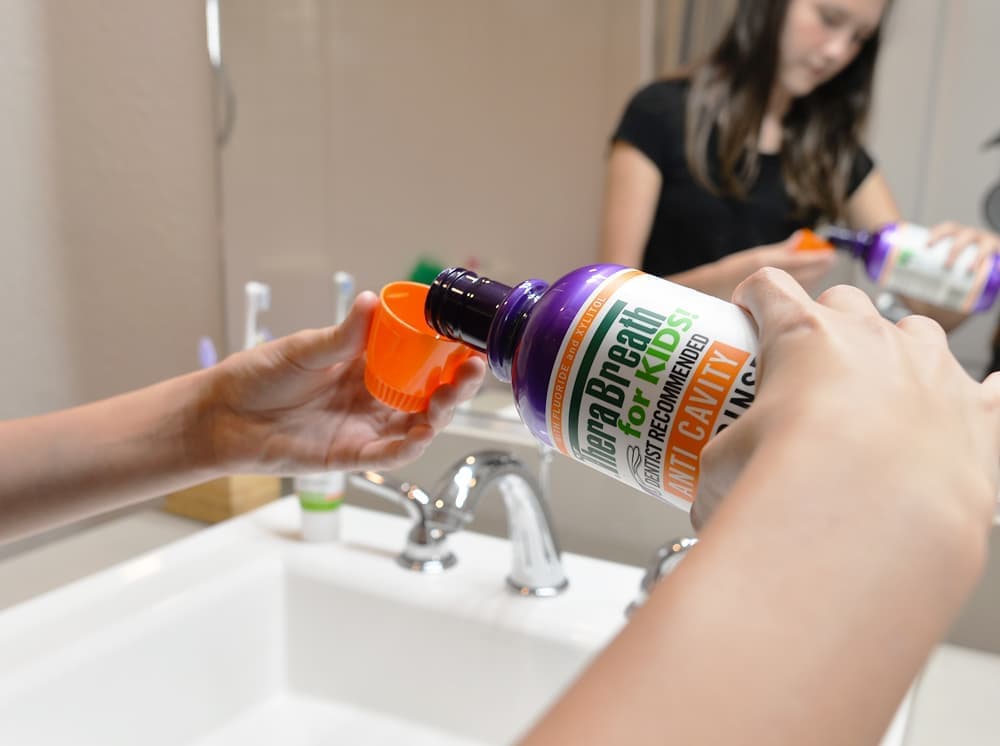
Halitosis treatment in kids depends on the underlying causes. Initially, parents should make sure their child is spending enough time brushing his or her teeth and tongue, flossing, and using kid-friendly mouthwash. If halitosis persists, a change in diet may be necessary, especially in regards to the amount of sugary drinks and snacks the child consumes. Regular dental checkups are important to young children as well. Periodontal disease can occur in children as young as 1-year-old due to unchecked oral debris collecting on gum lines.
Children should eat a healthy, fibrous breakfast every day to promote saliva flow, which is necessary for decreasing the level of oral anaerobic bacteria. They should also drink adequate water and older children can chew sugar-free gum, both of which also activate salivary glands and keep a sufficient flow of saliva circulating in the mouth.
When these methods fail to help halitosis in kids, doctors may prescribe blood and urine tests to see if something else is causing the problem. Diabetes, kidney, or liver issues can cause this issue by altering the pH level in the mouth, which encourages bacterial growth. Parents may be able to detect an underlying disorder by smelling certain distinctive odors.
For example, kids suffering from diabetic ketoacidosis often emit a fruity-smelling breath, while those with kidney problems have breath resembling the odor of urine. Additionally, an improperly functioning liver produce fishy-smelling breath due to unprocessed bile accumulating in the body.
Temporarily masking foul breath in children with gum or mints is not advisable since the problem may be the result of a serious medical condition. If the problem persists even after increasing the amount of brushing, flossing, and rinsing sessions, an appointment should be made with the child’s pediatrician to rule out any latent health issues.
Oral Care Products to Avoid
When considering over-the-counter mouthwashes or toothpastes for your children, make sure you know all the ingredients in these products. The majority of brand-name oral health products contain unnecessary, abrasive substances potentially harmful to the mouth as well as the body.
Alcohol: Used in many mouthwashes, this acts as a masking agent and will worsen bad breath because it promotes dry mouth. Chemically, alcohol is considered a "desiccant" that shrinks moist tissues and decreases saliva flow in the mouth, creating the perfect environment for anaerobic bacteria growth. Check out alcohol-free products to prevent bad breath.
Sodium lauryl sulfate: This is a foaming agent found in detergents and soaps, but it does nothing to prevent bad breath and may facilitate the formation of canker sores.
Saccharin (and other sugar substitute): Added to children's toothpaste as a taste enhancer, this provides no benefits to oral health.
Safely Treating Bad Breath in Kids and Toddlers
TheraBreath products neutralize sulfurous oral bacteria, help prevent dry mouth and bad breath, and improve the overall oral health of your child. And now, TheraBreath offers an oral rinse made specifically for kids with the same high quality you’ve come to expect in all our products! This mouthwash does not contain any toxic ingredients and is safe for use in kids 6 years of age and older, as well as toddlers, with proper supervision. With a delicious Gorilla Grape flavor, your kids are certain to love this bad breath, anti-cavity solution.
- TheraBreath® for Kids! Anti-Cavity Oral Rinse is free of the harsh ingredients often found in other brands and highly effective at combatting bad breath. Free of artificial colors and flavors, this kid-friendly mouthwash is made with certified natural flavoring from organic grapes. It contains fluoride to help prevent cavities and is sweetened with a touch of Xylitol, an ingredient with proven oral health benefits.
- TheraBreath® oxygenating toothpastes stimulate saliva flow and produce a hydrated, oxygen-rich oral environment in which anaerobic bacteria cannot survive. The powerful oxidizing agent in the products quickly neutralize anaerobic bacteria along with the VSCs they exude.
- TheraBreath® Tonsil Stone Kits contains all the products necessary to treat tonsil stones painlessly and prevent them from returning.
I am in love with any product that makes teeth brushing time with my kids a breeze. TheraBreath is definitely one of those products. My kids like the taste, and I like that it's organic and safe for my kids. Would definitely buy this again and recommend to other parents. - Lauren, Hollywood, CA
Find out what millions of Americans already know. Click here to read more of their success stories.
These statements have not been evaluated by the FDA. This product is not intended to diagnose, treat, or cure, or prevent any disease. The information contained herein is for educational purposes only. Before initiating any new oral treatment, please consult your oral care professional.
